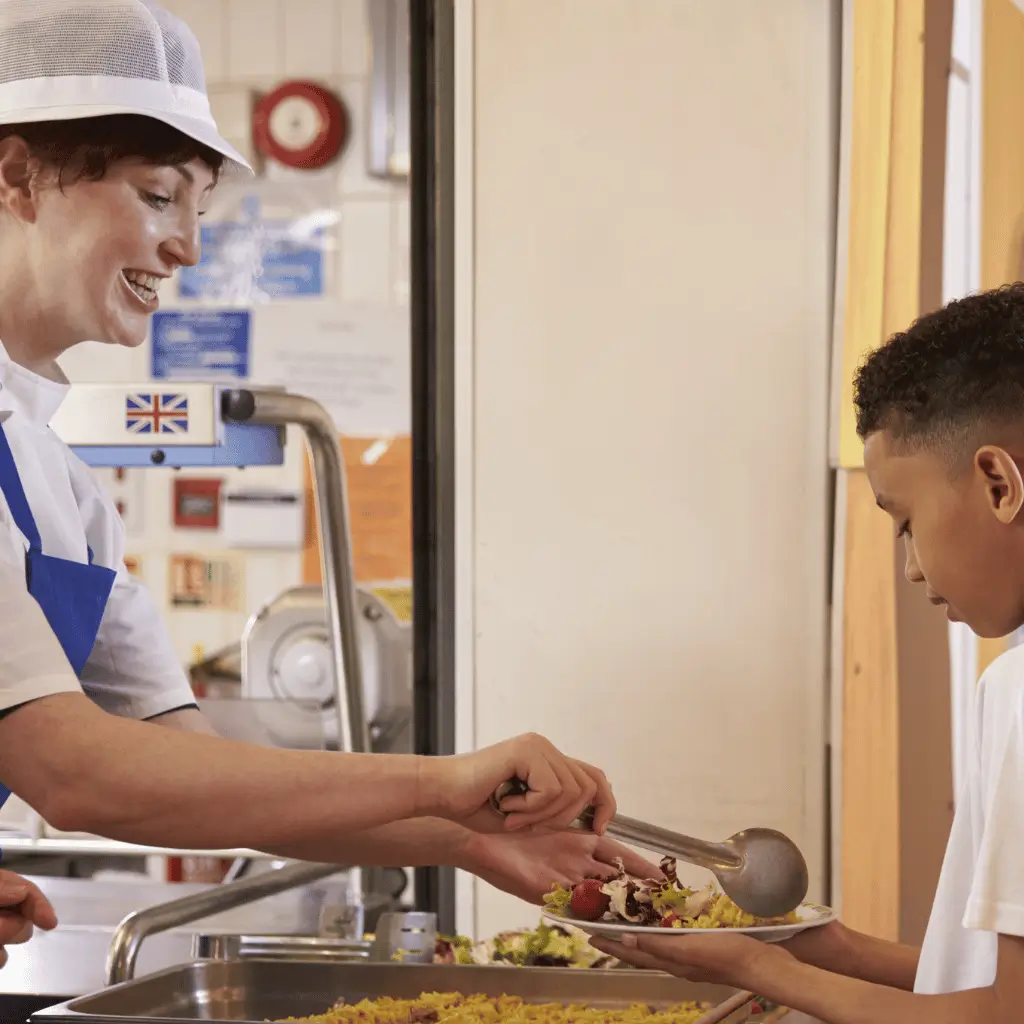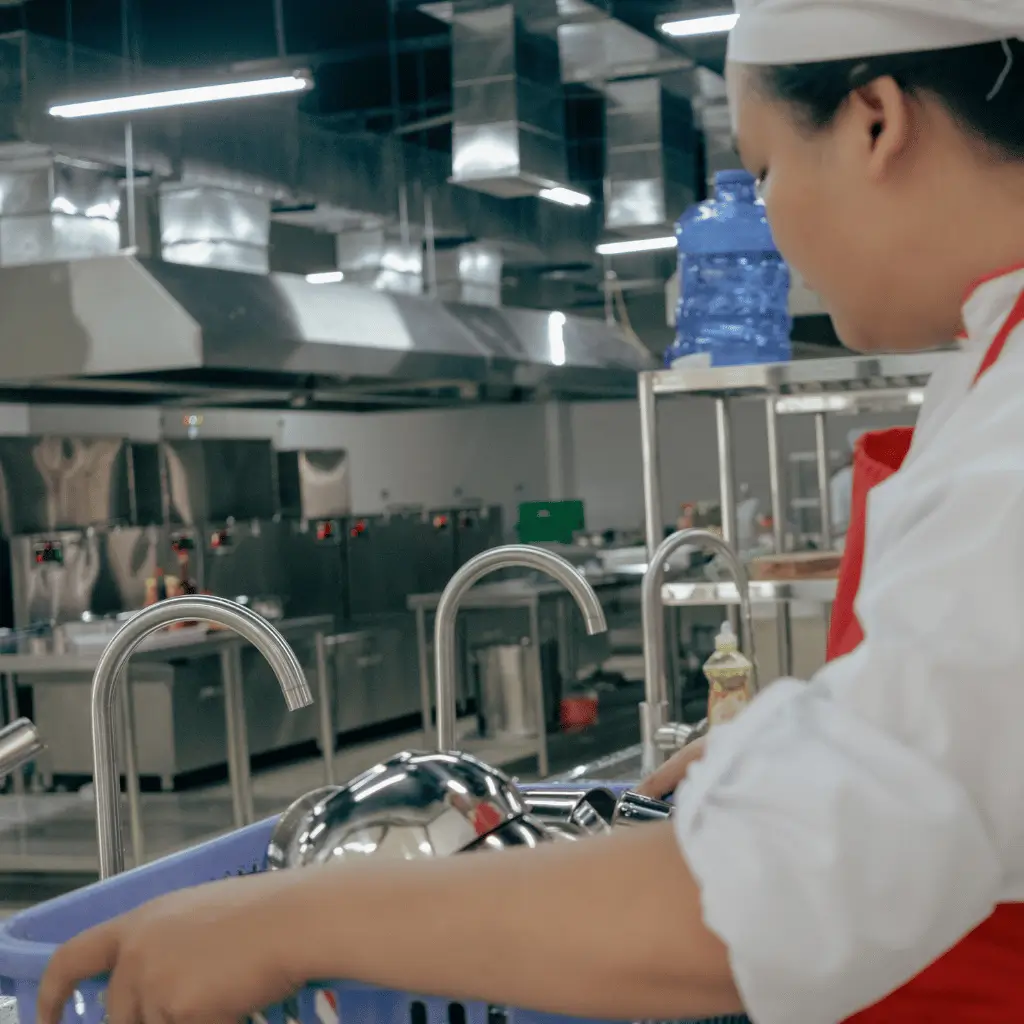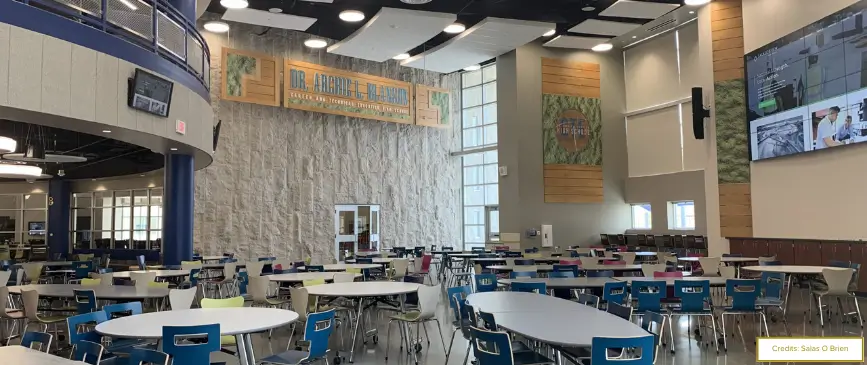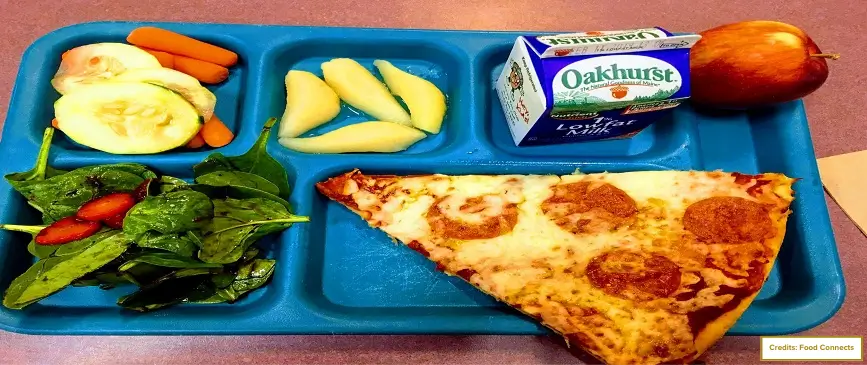Introduction
Have you ever wondered what students think about their school cafeteria? Understanding their preferences and concerns can make a difference in creating a positive dining experience. When parents and students can’t reasonably discuss their ideas openly and don’t always agree on what makes a school lunch great, a well-designed survey can solve this problem, connecting parents and students with school management.

In this blog, we’ll explore why school cafeteria surveys are so important and how they benefit everyone involved. We’ll also share tips on crafting practical survey questions that yield the best insights. By gathering honest feedback, you can make smart choices that improve meal quality, cater to diverse dietary needs, and create a welcoming atmosphere.
What are School Cafeteria Surveys? And Why are They Important?
A school cafeteria survey, often termed a school cafeteria feedback survey, plays a pivotal role in gathering valuable input from students and staff regarding their dining experience. It serves as a platform for individuals to voice their opinions on crucial factors like food quality, service efficiency, menu options, cleanliness, ambiance, and individual preferences within the cafeteria.

A survey helps us understand what’s cooking in the minds of cafeteria-goers. Their responses serve as the vital ingredient, offering insights into what’s working and needs improvement. It helps schools address weaknesses, improve food quality, and increase student satisfaction.

To truly gain worthy insights, don’t forget about the unsung heroes: the parents. Make sure to create opportunities for parents to weigh in on this matter. By inviting parents to join the conversation, schools can better understand the cafeteria’s impact on the entire school community. After all, every opinion counts when crafting a table experience that satisfies everyone’s palate.
Suggested reading → How To Promote Healthy Eating in School
Benefits of School Cafeteria Surveys
The school cafeteria is like the heart of the campus, pumping out not just food but also vital connections and lessons. Here’s why:
- For parents, it’s a peek into their kids’ daily grub, a way to ensure they’re getting the good stuff even when they’re away from home.
- For students, the cafeteria is a social hotspot where they can catch up with friends, trade snacks, learn about food, and maybe even sneak in a quick game of rock-paper-scissors.
- And for the schools? Well, the cafeteria is like a classroom in its own right. It’s where they teach lessons about nutrition, sustainability, and even cultural diversity through food. By serving healthy meals and accommodating different dietary needs, schools show they’re not just about academics but about nourishing minds and bodies.

Hence, when we talk about surveys for the cafeteria, we’re not just talking about food; we’re talking about a whole ecosystem that affects everyone in the school community. So, here are some of the benefits of these surveys:
Suggested reading → How to Create the Best High School Cafeteria
|
School Cafeteria Survey Advantages For: |
||
| Schools | Parents | Students |
| Identifies service bottlenecks. | Provides insight into children’s eating habits at school. | Gives students a voice in menu choices. |
| Provides insights into the quality of ingredients used in meals. | Ensures that dietary restrictions are accommodated. | Encourages healthier eating habits. |
| Facilitates the implementation of measures to reduce queue lengths and wait times. | Allows parents to express concerns about food quality. | Increases satisfaction with meals. |
| Allows for assessing the effectiveness of meal distribution systems. | Offers a platform for feedback on portion sizes. | Promotes awareness of nutrition. |
| Helps in monitoring the cleanliness of food preparation areas and dining spaces. | Facilitates communication. | Supports the development of lifelong healthy eating habits. |
| Helps in addressing issues related to noise levels or overcrowding during peak times. | Provides reassurance regarding food safety protocols. | Fosters a positive relationship with food. |
| Helps in budget allocation for food services. | Enables parents to suggest new menu items. | Creates opportunities for culinary education. |
What is the Right Time to Conduct a Cafeteria Survey?
Timing is everything when it comes to gathering feedback that drives improvement. Here’s a playbook for the perfect timing to conduct your cafeteria survey
Start of the School Year
Kick off the year with a survey as students return, capturing fresh perspectives and setting the tone for the cafeteria experience.
Mid-Year Pulse Check
Around the halfway mark, take stock of what’s working and what needs tweaking to keep the momentum going strong.
After Significant Change
If there have been significant changes in cafeteria management, menu options, or policies, it’s essential to conduct a survey shortly after to gauge the impact and make necessary adjustments.
Seasonal Changes
Tune into seasonal shifts in appetite by surveying during menu transitions, ensuring your offerings align with changing tastes and temperatures.
Regular Intervals
Establish a routine schedule for surveys, whether it’s every six months or at the end of each semester, to maintain consistent feedback collection.
Year-End Wrap-Up
Before the academic year concludes, conduct a final survey to reflect on the overall cafeteria experience and gather insights for future enhancements.
With these well-timed surveys, your cafeteria will be on the fast track to culinary excellence, serving meals that earn top marks from everyone in the school community.
What do you need to Do Before Conducting a Survey?
Before jumping into the survey questions, let’s lay the groundwork to ensure your synopsis hits it out of the park.
Steps to Draft a Perfect School Cafeteria Survey
Running a successful school cafeteria survey requires a solid game plan. According to our experts, first, you must know precisely what you’re aiming for and get your ducks in a row—then craft questions to help you dig up the information you need. Finally, have a strategy for collecting and analyzing the responses so you can separate the wheat from the chaff. Below is a quick overview of these steps.
- Define Survey Goals: Define what you want to evaluate in the cafeteria. This could include aspects like the standard of the meal, the staff service, the neatness of the dining space, or the variety of menu options.
- Determine your Respondents: Decide who will be taking the survey. This could be students, teachers, parents, or cafeteria staff. Understanding your audience helps tailor the questions to get the most relevant feedback.
- Create Survey Questions: Develop clear and concise questions that address your identified objectives. Use a mix of question types, such as rating scales, multiple-choice questions, and open-ended queries, to gather a range of data.
For exemplary questions, jump over to the next section.
- Choose Distribution Method: Sort how to distribute the survey to ensure it reaches your audience effectively. Options include paper-based surveys during lunch, online forms emailed to parents and staff, or electronic kiosks in the cafeteria.

- Select Response Formats: Choose the appropriate response scales for your questions to ensure the information you collect is useful. Use Likert scales for questions about satisfaction, multiple choice for quick selections, yes/no for straightforward answers, ranking scales to prioritize preferences, and open-ended responses for detailed feedback.
- Evaluate Survey Results: Once the surveys are collected, analyze the feedback to identify common trends and improvement areas. Look for response patterns highlighting specific issues or strengths of the cafeteria services.
- Share the Findings: Summarize the survey results in a report and share it with key stakeholders, such as school administrators and cafeteria managers. Highlight the main findings and suggest possible improvements based on the feedback.
- Implement Changes: Use the insights from the survey to make necessary adjustments in the cafeteria. This could involve altering the menu, improving cleanliness, or training staff to be more friendly and helpful.
- Check Back: After applying changes, conduct a follow-up survey to assess whether the improvements have had a positive impact. This ongoing feedback loop helps ensure continuous improvement in school cafeteria services.
Read Our Guide → Simple Steps for Healthy School Cafeteria
Questions to Incorporate in Cafeteria Survey
With our expertise in school cafeteria renovations, we know exactly what it takes to transform your cafeteria based on student feedback. Here are some examples of essential questions every school should ask to make their cafeteria a place where students love to eat and hang out.
A. Parental Involvement
- Have you visited the school cafeteria in the last three months?
- Yes
- No
- How frequently does your child buy food at school?
- Every day
- 5 – 6 times a month
- 1 – 2 times a week
- Never
- Are you satisfied with the school lunch program’s accommodations for children with food allergies?
- Yes, completely
- Somewhat
- Not at all
- Not applicable (my child does not have food allergies)

- Would you be open to paying more for healthier lunches?
- Yes
- No
B. Menu Variety and Student Preferences
- How satisfied are you with the variety of meal options available in the cafeteria?
- Very Satisfied
- Satisfied
- Neutral
- Dissatisfied
- Very Dissatisfied
- Do you feel the cafeteria menu reflects cultural diversity and different taste preferences?
- Strongly Agree
- Agree
- Neutral
- Disagree
- Strongly Disagree
- How would you rate your overall satisfaction with the cafeteria menu?
- Very Satisfied
- Satisfied
- Neutral
- Dissatisfied
- Very Dissatisfied

- Do you have sufficient time to purchase and consume lunch in the cafeteria before your break finishes?
- Yes
- No
- Comments:
- How would you rate the school cafeteria food with the following options?
- Good
- Average
- Poor
C. Food Quality and Safety
- On a scale of 1 to 5, how would you rate the overall cleanliness of the cafeteria?
- Very Poor
- Poor
- Average
- Good
- Excellent
- How often do you notice fresh and quality ingredients used in your meals?
- Never
- Rarely
- Sometimes
- Often
- Always
- How satisfied are you with the taste and presentation of the meals served?
- Very Satisfied
- Satisfied
- Neutral
- Dissatisfied
- Very Dissatisfied

D. Operational Efficiency
- How satisfied are you with the speed of service in the cafeteria?
- Very Satisfied
- Satisfied
- Neutral
- Dissatisfied
- Very Dissatisfied
- How would you rate the friendliness and efficiency of the working cafeteria staff?
- Excellent
- Good
- Average
- Poor
- Very Poor
E. Health and Hygiene
- Do you feel the cafeteria maintains a clean and sanitary environment for dining?
- Strongly agree
- Agree
- Neutral
- Disagree
- Strongly disagree
- How often do you observe staff wearing gloves and hairnets while handling food?
- Always
- Most of the time
- Sometimes
- Rarely
- Never

F. Staff Experience
- How would you rate the training and support you receive to perform your duties effectively?
- Excellent
- Good
- Fair
- Poor
- Very Poor
- Are there any challenges you face in managing your cafeteria tasks that you feel need addressing?
- Yes
- No
- If (specify)
- Do you feel you have enough resources and equipment to perform your job well?
- Yes
- No
- Neutral
- How would you rate the communication between cafeteria staff and school management?
- Very Poor
- Poor
- Fair
- Good
- Very Good
- Excellent
- Do students generate a significant amount of food waste at mealtime? If yes, what measures can be taken to stop it?
- Yes, a lot
- Yes, but manageable
- No, not much
- No, very little
- Comments:

G. Feedback on Survey
- How easy was it for you to complete this survey?
- Very Easy
- Easy
- Neutral
- Difficult
- Very Difficult
- Do you feel this survey addressed all relevant aspects of your experience in the cafeteria?
- Yes
- Mostly
- Somewhat
- No (Please Specify)
- Is there anything else you would like to share about your experience working in or using the cafeteria?
How to Have a Successful School Cafeteria Survey: 10 Basic Tips
Below are some useful, practical ideas and tricks suggested by our professional Kern Halls (Chief Innovator of Ingenious Culinary Concept), who’ve been at the heart of K-12 school cafeteria services for the past 15 years.

- Distribute in the cafeteria on tables or hand out as students leave.
- Provide marked drop-off boxes.
- Have volunteers use tablets during meal periods.
- Post a survey link on the district website/ Use school announcements, newsletters, and social media.
- Conduct surveys at the end of each menu cycle.
- Offer incentives like small prizes or prize draws.
- Use posters and flyers around the school.
- Ensure anonymity to encourage honest responses.
- Use both quantitative and qualitative questions.
- Use feedback to make visible improvements.
Read Our Guide → 5 Ways to Deliver on Personalized Food Experiences
Final Thoughts
In conclusion, making sure your cafeteria offers what students want is crucial to your program’s success and your students’ happiness. A brief, targeted online survey is a simple, cost-effective way to gather valuable feedback.
These insights will help you make informed decisions, leading to a more appealing cafeteria menu and greater student satisfaction. If you haven’t already done so, now is the perfect time to survey your students and start reaping the benefits of their feedback.
FAQs
1. Why should we conduct a school cafeteria survey?
Conducting a school cafeteria survey helps gather feedback from students and staff to improve food quality, menu variety, and the overall dining experience. It also ensures that the cafeteria meets its users’ nutritional and preference needs.
2. What types of questions will be included in the survey?
The survey will include questions about food quality, menu variety, portion sizes, dietary preferences, and overall satisfaction. Sections for suggestions and additional comments may also be included to gather comprehensive feedback.
3. Why is student feedback important for the school cafeteria?
Student feedback is essential because it helps ensure that the food provided meets their tastes and nutritional needs, leading to higher satisfaction and better meal participation rates.
4. How can a school cafeteria survey impact students’ health?
By incorporating feedback from the survey, the school can offer healthier and more appealing meal options, encouraging students to make better dietary choices and promoting overall well-being.
5. How will students and parents be informed about changes made based on the survey?
Updates and changes based on survey results will be communicated through school newsletters, emails, and announcements. This transparency helps build trust and shows that the school values input from its community.


